Scutula heeri (Hepp ex A. Massal.) P. Karst.
Acta Soc. Fauna Flora Fenn., 2, 6: 151, 1885. Basionym: Lecidea heeri Hepp ex A. Massal. - Nuovi Ann. Sci. Nat. Bologna, Ser. 3, 7: 214, 1853.
Synonyms: Biatorina heeri (Hepp ex A. Massal.) Anzi; Catillaria heeri (Hepp ex A. Massal.) H. Olivier; Nesolechia heeri (Hepp ex A. Massal.) A. Massal.; Scutula miliaris subsp. heeri (Hepp ex A. Massal.) Sacc.
Distribution: N - TAA (Brackel 2016), Lomb (Brackel 2016).
Description: Thallus crustose, epikapylic, composed of small, ecorticate, homoiomerous, 60-120 µm tall areoles, growing on the thalli of Peltigera species with cyanobionts, severely damaging the host thalli. Apothecia lecideine, 0.2-0.4(-0.5) mm across, scattered to occasionally aggregated, with a flat to distinctly convex, pale to dark brown or finally black disc and a thin proper margin. Proper exciple 50-70 µm thick, of parallel, radiating, branched and anastomosing, strongly adglutinated hyphae; epithecium discontinuous, with a granular, dark red-brown layer; hymenium colourless, 45-60 µm high, the hymenial gel hemiamyloid; paraphyses septate, very sparingly branched and anastomosing 1.5-3 µm thick at mid-level, the apical cells 3.5-6 µm wide (the lumina 2-4 µm); hypothecium colourless to pale brown, 70-140 µm high. Asci 8-spored, with an amyloid tholus, a diffuse non-amyloid apical cushion, and an outer amyloid wall layer. Ascospores (0-)1-septate, hyaline, ellipsoid to broadly ellipsoid, (10-)11-13(-16) x (4-)4.5-5(-6) µm. Pycnidia globose, subimmersed to sessile. Microconidia thread-like, often slightly curved, (7-)10-12(-14) x (0.5-)0.9-1(-1.5) µm; macroconidia 0-1-septate, (9-)12-16(-18) x (2-)2.6-3.5(-5) µm. Photobiont probably absent, but the thallus is often associated with green, perhaps micareoid algae. Spot tests: K-, C-, KC-, P-, UV-. Chemistry: thallus without lichen substances; apothecia with different pigmentsNote: a doubtfully lichenized, lichenicolous fungus growing on the thalli of Peltigera-species with cyanobionts. Probably more widespread in Italy.
Growth form: Lichenicolous fungus
Substrata: soil, terricolous mosses, and plant debris
Reproductive strategy: mainly sexual
Commonnes-rarity: (info)
Alpine belt: very rare
Subalpine belt: rare
Oromediterranean belt: absent
Montane belt: rather rare
Submediterranean belt: rare
Padanian area: absent
Humid submediterranean belt: very rare
Humid mediterranean belt: absent
Dry mediterranean belt: absent

Predictive model
Growth form: Lichenicolous fungus
Substrata: soil, terricolous mosses, and plant debris
Reproductive strategy: mainly sexual
Commonnes-rarity: (info)
Alpine belt: very rare
Subalpine belt: rare
Oromediterranean belt: absent
Montane belt: rather rare
Submediterranean belt: rare
Padanian area: absent
Humid submediterranean belt: very rare
Humid mediterranean belt: absent
Dry mediterranean belt: absent

Predictive model
 DOLICHENS
DOLICHENS

